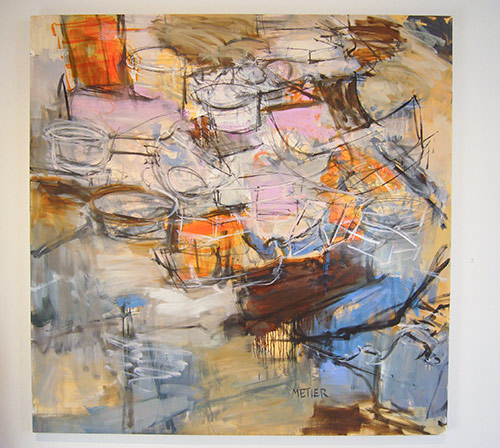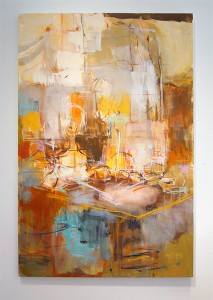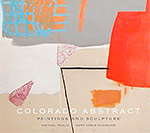“Where I Come From” by Linda Sharp
Where I Come From, 8 x 10 inches, ©2010 Linda Sharp
Yesterday I received this marvelous jewel of an artwork in the mail. It’s my purchase from the SAQA Benefit Auction. I’d had my eye on it from the beginning, and now I’m so thrilled to have it. The photograph doesn’t do it justice; I wish you could see it in person. The spheres are brilliant little half-globes of felt, and the quilting is exquisite, bringing to mind ocean currents or shipping routes. The circular globe shape is dimensional, a raised area surrounded by a narrow strip of felt. Even the back is meticulously finished, with the title done in beautiful lettering, and some intriguingly deconstructed printing hinting at the narrative.
Where I Come From, reverse, ©2010 Linda Sharp
I wanted to know more about the story behind the quilt, so I contacted the artist, Linda Sharp, to ask her about it. Here’s what she said:
“Where I Come From” is a theme that has intrigued me for years.
Being an adoptive child made me wonder about my biological origins and what secrets may be encoded in my DNA waiting to surprise me.
I am reasonably certain now that I am not a lost princess, as childhood dreams dictated. But this is just as well, since it is probably too late for me to learn how to eat at a place setting with six forks and I suspect that even a tiara won’t really help a bad hair day.As the daughter in an air force family, and the wife of an engineer specializing in rural telecommunications, I have lived in many parts of the world.
Landscapes spoke to me, friendships were made and sometimes wisped away, foods were remembered, but no one place held all the good things.
I could never really answer the question “Where do you Come From?”The heavy metallic stitching on the quilt represents the complexity of where we belong – the currents of time and travel change us and our needs.
The button is a whimsical ‘belly button’ hinting at the secrets of my birth.
The felted spheres speak to me of many things, molecules, our cells, map markers and planets.
The target is focused on the Oldavai Gorge.
I suppose that the answer is “I have come from everywhere I have been.”
—-
I was especially drawn to this quilt because of the felting, which touched a spark of synchronicity for me. I’ve been interested in the idea of working with felt for several months, and I’ve been doing some research into how to do it, plus I bought some wool this past summer (a story in itself!). Linda has generously shared some of her knowledge with me – did you know that you can use Kool-Aid to dye wool? I certainly didn’t. But I’m going to try it, because really, what could be easier?
I highly recommend a visit to Linda’s web site, Rock, Paper, Stitches. Perusing her categories, you will find that not only does she make quilts and felted art, but it turns out she’s also an accomplished jeweler, teacher, and even a cartoonist! And be sure to look at the Workshops tab, where she shares some of her methods.
There are still some beautiful art quilts available in the auction. Up for bid through Sat., Oct. 2, are the pieces in the 2nd group on pages 2a and 2b. Starting Monday, Oct. 4, bidding starts for the last group, which you can see on pages 3a and 3b.

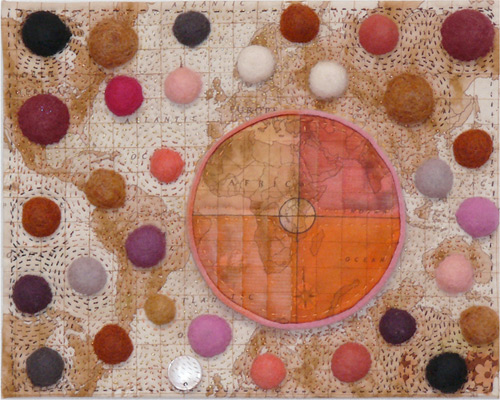

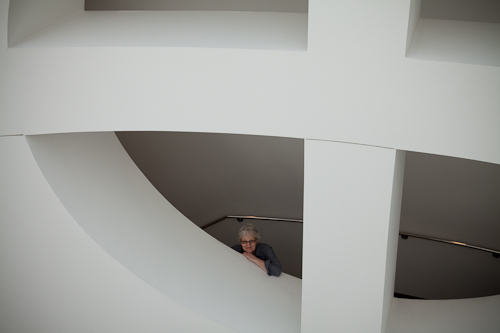
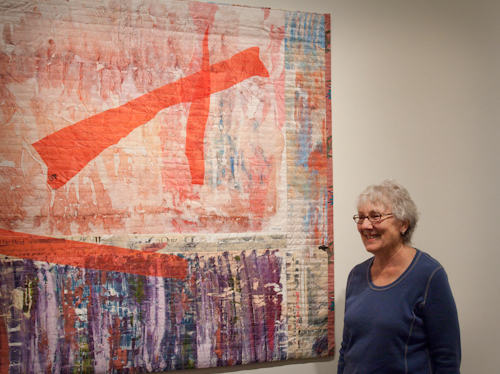



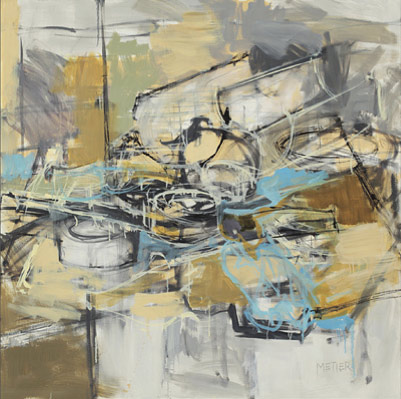 Whistle, 48 x 48 inches, oil on canvas, ©2010 Amy Metier.
Whistle, 48 x 48 inches, oil on canvas, ©2010 Amy Metier.